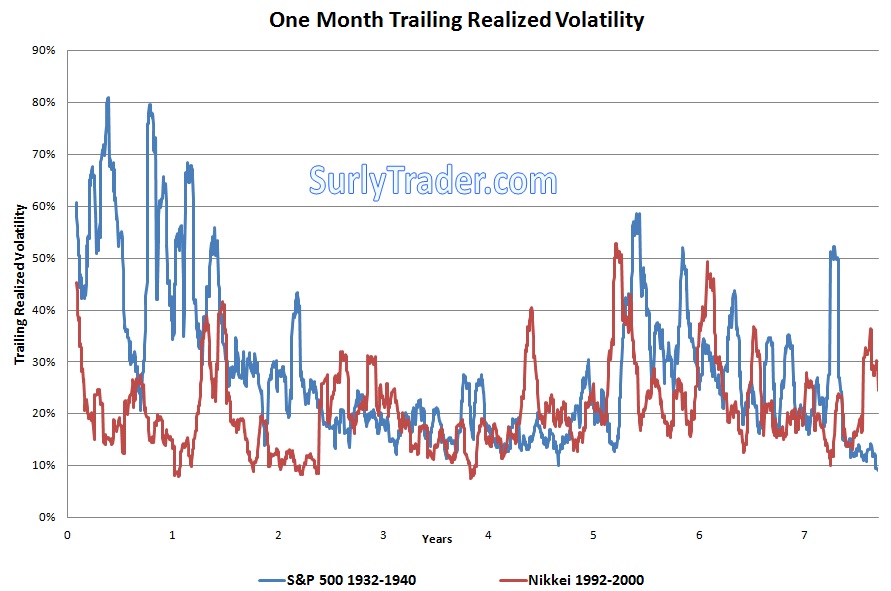Option Strategy: Long Gamma, Short Vega
Historical 30-day volatility has recently hit a low of below 12%. A volatility of 12% means that we are experiencing daily moves on the S&P 500 of about .75%. My belief is that this is much too low. When top economists such as Krugman and Morgan Stanley’s Stephen Roach are placing 40% odds of a double dip global recession by the end of 2010, I find it improbable that we can expect daily moves of less than 1%. In addition, the historical periods following the great depression’s market bottom and the Japanese asset bubble bottom were ripe with volatility. For over 7 years after the market bottoms the returns remained turbulent.
The question is how to profit from the idea of volatility returning to the market when you are generally an option seller and want to take advantage of implied volatility being higher than realized volatility. The key lies in the tenor of the options.
By examining the skew and term structure of implied volatility, you can see that options with longer maturities have higher implied volatilities than options that expire soon. In addition, we still see a pretty strong skew, meaning that out of the money put options are trading for quite a bit higher implied volatility than at the money put options. This structure provides a very good way to take advantage of a view that realized volatility will pick up soon while long term volatility will be lower than the ~24% that out of the money put options are trading at.
The strategy is simple:
- Purchase a 1 – 3 month put at-the-money which has a high gamma and low vega
- Sell a 1 year put 10% or further out of the money which exhibits a high negative vega and low gamma
- Delta hedge the overall position with the SPY ETF so that the delta is neutral at the end of each trading day



No comments:
Post a Comment